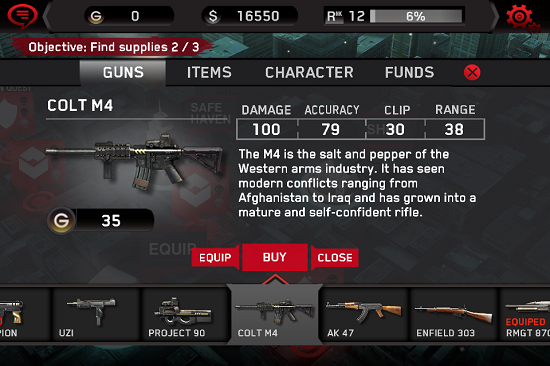
Yesterday, Taylor Martin offered you up a brief summary on in-app purchases, related to mobile games. Near the end he asked you if you, Dear Reader, are apt to purchasing in-app content for your favorite games. Or any game, for that matter. Not surprisingly, many of you were pretty adamant about how you wouldn’t buy anything in a game after that initial purchase. I’m not surprised by this because I am someone who thinks that it’s getting out of hand, and therefore I’ve almost completely stopped doing it myself.
And for me, that’s a pretty big step.
It’s a big step because I understand where the developers are coming from. More to the point, I completely understand that this is a model that makes sense to them. Worse, it’s working. Yeah, it is. While we can all sit here and decry the model as a whole, it doesn’t change the fact that people seem to like to be able to buy the game for a far cheaper cost out-right, and then at a later point spend a bit more to get “more stuff.”
“More stuff” is usually always connected at the hip with “more money,” and this isn’t new to any market. The reason it just rubs most people, or more specifically most gamers, the wrong way, is because the things that the developers want more money for, what falls under “more stuff,” is generally pretty important to the core game. Sure, you can go through it without those things, but obviously it must be pretty cool if, 1) the developer thinks you’ll pay for it and, 2) you seriously consider paying for it.

The only time it really, really doesn’t work is when the developers completely lock out something in favor of having people pay extra for it. Taylor used a perfect example: Dead Trigger, which launched for iOS not too long ago, and most recently made its presence known on the Android platform. I’ll tell you right now that I’m a big fan of Dead Trigger. I really like playing it, especially in quick bursts. But it is hindered right out of the gate by in-app purchases.
It’s made worse by the fact that you can only buy the M4, along with other weapons, with real money. You don’t get to unlock the M4 at some later date, or get to buy it with the digital money you collect in-game. Nope. You want the M4? Spend a bit more cash and it’s yours. But if you’re not willing to pony up the dough, why on earth should the developer, in this case Madfinger Games, be willing to provide the goods?
Well, the simple answer should be that you bought the game. You see, in-game purchases are hindered by the sheer overconfidence of the developer. I want the M4. I do. But I’m not going to pay more to get it. I’m content enough to stick with the very engaging shotguns, and making my way through zombies in that way. But that doesn’t mean that if I couldn’t buy the M4 with in-game cash that I wouldn’t. Because I would. You wouldn’t even have to dare me.
It gets better than buying guns or accessories, though. You can buy money. Yeah! You can spend 99 cents to purchase $40,000 worth of in-game money. That’s a pretty hefty some to be sure, and it would probably get you pretty far within the world. But it doesn’t buy you the M4, or any other gun you can only “purchase” with a real purchase of real money.
Buying money is ludicrous, but it doesn’t just happen in Dead Trigger. You can buy more spins, or even more coins in titles like Bejeweled Blitz. Like I said earlier, these types of things aren’t new to Dead Trigger, but it would seem that this new title from Madfinger Games is just reaching for the stars as to the most ridiculous situation for buying in-app objects.
Is the in-app purchase model broken? No, but it is skewed. It’s skewed heavily towards the monetization of something that used to be based entirely on having fun. Games should be making money for the developer, that’s obvious. But we’ve lost the way that we used to have fun with games. A little off topic, but go play Battlefield 3 now, and you’ll see what I’m talking about. Developers are catering to those who will pay money, over and over again, and leaving everyone else in the dust.
The in-app purchasing model for games, especially mobile games, is a skewed disservice to the average gamer, and here’s the kicker: the average gamer, the average consumer is exactly who these mobile games are supposed to be tailoring to. The people who don’t necessarily play video games all the time, like Taylor himself, but who just want something to pick up and play throughout the day, when they have a chance.
Don’t beat them down, or anyone for that matter, with these bite-size purchases that actually limit the game if you don’t buy them. It isn’t any fun, and games are supposed to be fun.